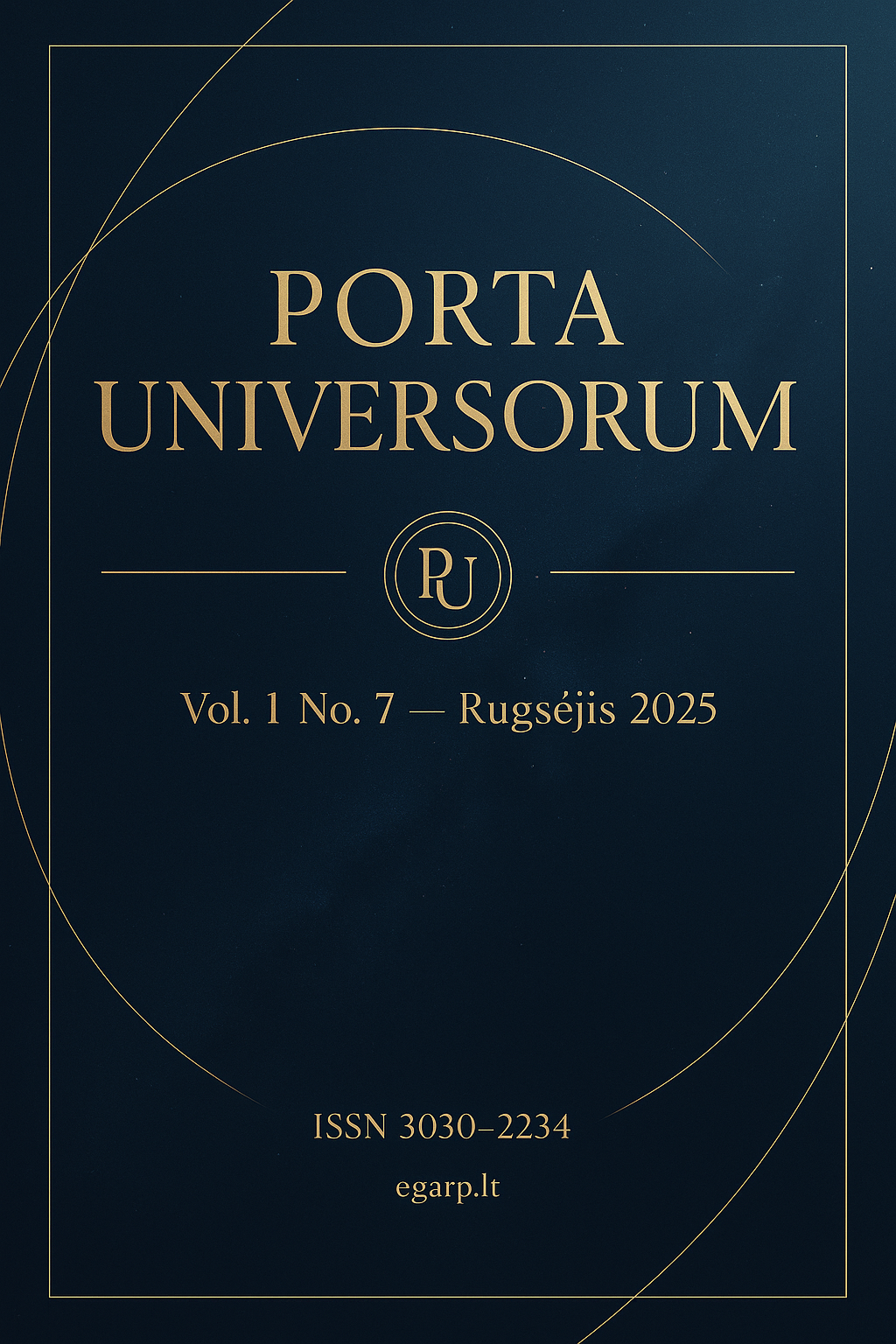Impact of Picture Books on Reading Comprehension Skills of Preschool Children
DOI:
https://doi.org/10.69760/portuni.0107007Keywords:
Picture books, reading comprehension, preschool education, early literacy, teacher perception, Akinyele Local GovernmentAbstract
This study investigated the impact of picture books on the reading comprehension skills among preschool children in Akinyele Local Government, Nigeria. Five purpose of the study and five research questions guided the study. A mixed methods was employed. A stratified random sampling technique was used to select 10 public and private nursery schools. From these schools, 20 early childhood educators and 100 preschool children were selected, resulting in a total sample size of 120 participants.
Data collection instruments included a structured questionnaire for teachers, an observation checklist to record classroom practices, and a reading comprehension assessment for children. These instruments were validated by experts in early childhood education, with a pilot test yielding a reliability coefficient of 0.78. Data collection involved researcher-administered questionnaires, classroom observations, and comprehension assessments conducted after reading selected picture books to the children. Descriptive statistics were used to analyze quantitative data, while thematic analysis was applied to qualitative data from observations.
Findings revealed that picture books significantly enhance children's reading comprehension, especially when combined with interactive reading strategies such as questioning and discussion. However, challenges such as limited access to quality picture books and inadequate teacher training were also identified. The study concluded that picture books are valuable tools for promoting early literacy and recommended their integration into the preschool curriculum, alongside professional development for educators and the provision of culturally relevant materials. These findings have implications for improving literacy outcomes and informing early childhood education policy and practice in similar low-literacy settings.
References
Agustin, L., Wisudaningsih, E. T., & Fatmawati, R. (2023). Exploring How Skimming and Scanning Fosters EFL Students’ Reading Comprehension at an English Club Senior High School in Indonesia. Tamaddun.
Benitez, V. L., Castellana, M. A., & Potter, C. E. (2022). How Many Palabras? Codeswitching and Lexical Diversity in Spanish-English Picture Books. Languages.
Campos, D. F., Nguyen, T., Rosenberg, M., Song, X., Gao, J., Tiwary, S., Majumder, R., Deng, L., & Mitra, B. (2016). MS MARCO: A Human Generated MAchine Reading COmprehension Dataset. CoCo@NIPS, abs/1611.09268.
Caple, H., & Tian, P. (2021). I see you. Do you see me? Investigating the representation of diversity in prize winning Australian early childhood picture books. The Australian Educational Researcher, 49, 175–191.
Demoiny, S. B., & Ferraras-Stone, J. (2018). Critical Literacy in Elementary Social Studies: Juxtaposing Historical Master and Counter Narratives in Picture Books. The Social Studies, 109, 64–73.
Dua, D., Wang, Y., Dasigi, P., Stanovsky, G., Singh, S., & Gardner, M. (2019). DROP: A Reading Comprehension Benchmark Requiring Discrete Reasoning Over Paragraphs. North American Chapter of the Association for Computational Linguistics, 2368–2378.
Garner, P., & Parker, T. S. (2018). Young children’s picture-books as a forum for the socialization of emotion. Journal of Early Childhood Research, 16, 291–304.
Gwanshak, N. A., Shikden, A. G., & Danrimi, H. I. (2024). Effects of picture books on reading performance of pupils with dyslexia in Gombe metropolis, Gombe state, Nigeria. Journal of Educational Research in Developing Areas, 5(2), 223-233. https://doi.org/10.47434/JEREDA.5.2.2024.223
Hernández, A., Montelongo, J. A., & Herter, R. (2016). Using Spanish-English Cognates in Children’s Choices Picture Books to Develop Latino English Learners’ Linguistic Knowledge. The Reading Teacher, 70, 233–239.
Hsiao, C., & Shih, P.-Y. (2016). Exploring the effectiveness of picture books for teaching young children the concepts of environmental protection. International Research in Geographical and Environmental Education, 25, 36–49.
Hu, M., & Nation, P. (2020). Unknown vocabulary density and reading comprehension. Reading in a Foreign Language, 13, 403–430.
Larragueta, M., & Ceballos‐Viro, I. (2018). What Kind of Book? Selecting Picture Books for Vocabulary Acquisition. The Reading Teacher, 72, 81–87.
Litzler, M. (2016). A Multimodal Analysis of Picture Books for Children: A Systemic Functional Approach. Language Value, 8, 77–81.
Liu, D., & Park, J. W. (2019). A Study on the Design and Presentation of Virtual Contents in AR Picture Books. 2019 IEEE 2nd International Conference on Computer and Communication Engineering Technology (CCET), 16–20.
Lubis, R. (2018). The Progress of Students Reading Comprehension through Wordless Picture Books. Advances in Language and Literary Studies, 9, 48–52.
Nguyen, A. (2021). “Children Have the Fairest Things to Say”: Young Children’s Engagement with Anti-Bias Picture Books. Early Childhood Education Journal, 50, 743–759.
Shimek, C. (2018). Sites of Synergy: Strategies for Readers Navigating Nonfiction Picture Books. The Reading Teacher.
Solfiah, Y., Risma, D., Hukmi, & Kurnia, R. (2020). Early Childhood Disaster Management Media Through Picture Story Books.
Downloads
Published
Issue
Section
License
Copyright (c) 2025 Porta Universorum

This work is licensed under a Creative Commons Attribution-NonCommercial 4.0 International License.
License Terms
All articles published in Porta Universorum are licensed under the Creative Commons Attribution–NonCommercial 4.0 International License (CC BY-NC 4.0). This license permits:
-
Sharing (copying and redistributing the material in any medium or format),
-
Adapting (remixing, transforming, and building upon the material),
-
for non-commercial purposes only,
-
with proper attribution to the original author(s) and source.
Commercial use of the material is not permitted without prior written permission from the publisher.




